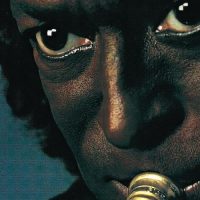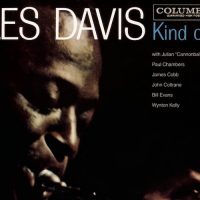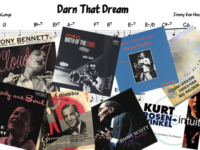Here’s a look back at a handful of often-overlooked Miles Davis recordings that you might not have already grown dead-dog sick and tired of …
1. AMANDLA (1989): The old man still had it. Don’t believe me? The band (as always) says it all: new altoist Kenny Garrett, pianist Marcus Miller, keyboardist Joey DeFrancesco, tenor Rick Margitza and pianist Joe Sample. “Mr. Pastorius” is so straight-ahead, considering the time-frame, that I got misty. Yet his pop leanings find great purpose throughout. An admirable record in that it is both hit-single sounding and jazz credible.
2. ON THE CORNER (1972): Has to be his tripping-est album ever … and his most street-level. (Even more so than the hip-hop record; more on that later.) I love the distorted guitars and strangely thin, double-timed drums here; sounds like north Mississippi blues meets heroin. Must also be his biggest bird-flipping release. I mean, the dude put his trumpet through a guitar amp! I love it for that. Be real: Nothing says Miles Davis like a bird being flipped.
3. IN A SILENT WAY (1969): Bitches Brew got all the press. But on my desert island, give me this particular Miles Davis fusion release. There are only two titles for each side, and neither is a song. (Side two was the closing for the first jazz radio program I ever did, long ago at the college station. I loved saying those words: “And now, side two of Miles Davis’ In a Silent Way …”) Best of all is not the mighty, mighty grooves or the desultory rock-style soloing, but those quiet moments when Miles neatly presupposes the 1990s’ so-called “space” music.
4. DOO-BOP (1991): Miles Davis never stopped shedding sidemen — and skins. If you could follow him from cool to kinda-classical to modal to hot through to a rocking, then ambient In a Silent Way, then you had to follow him into pop. (I liked “Time After Time,” for what it was trying to do.) What that means is you understand the artistry, without getting bogged down in the labels. For Miles, there must then have followed this, a hip hop excursion — the next natural outgrowth. Davis said he wanted to make the kind of music he heard coming from passing cars when he opened the windows of his home. As such, all of these permutations were required. I liked the record on these terms. It’s not a great hip hop effort. However, it is — coming from a guy who played nonet cool jazz along side the likes of Shorty Rogers in the 1940s — ever forward looking, ever hopeful and ever entertaining.
5. LIVE AT MONTREUX (1991): Finally, you’ll notice I stayed away from the really old stuff. Mostly because the old stuff is not that unsung anymore. Loving Miles Davis is getting mysteriously close to loving Louis Armstrong. Who doesn’t? Join the darn club. So, I’m going to cheat: The last thing Miles recorded before his death was startling, indeed: It’s a loving look back, recorded with the old Gil Evans arrangements. I’d be hard pressed, frankly, to imagine such a thing were possible. Quincy Jones conducted the outing — which included cuts from Birth of the Cool, Porgy and Bess, Sketches of Spain and Miles Ahead.
The beauty is not in the telling: Miles is clearly about to succumb to those things which ailed him. The beauty is that this fierce rebel, this restless wanderer, would have taken the time to revisit these wonders at all. Often times, his protege — the young trumpeter Wallace Roney — steps in to buttress the proceedings. But I never stopped having the feeling that this was a once-in-a-lifetime moment, Miles taking a rare opportunity to look back over his shoulder.
Sadly, that’s all too true: A few weeks after this concert, Miles Davis was admitted to a Los Angeles hospital and things went south. His death was attributed to pneumonia, but Quincy allows as there were multiple causes. His liner notes became a kind of love letter to Davis, both touching and true: “You really did revolutionize jazz five times,” Q writes. “After you, who?”
- How Deep Cuts on ‘Music From Big Pink’ Underscore the Band’s Triumph - July 31, 2023
- How ‘Islands’ Signaled the Sad End of the Band’s Five-Man Edition - March 15, 2022
- The Band’s ‘Christmas Must Be Tonight’ Remains an Unjustly Overlooked Holiday Classic - December 25, 2016




